Repaglinide
- CAS No.
- 135062-02-1
- Chemical Name:
- Repaglinide
- Synonyms
- PRANDIN;Repaglinide API;EP5.2;CS-1998;NOVONORM;AG-EE-623;ag-ee388zw;Repaglinid;Rapaglinide;Rebaglinide
- CBNumber:
- CB4140539
- Molecular Formula:
- C27H36N2O4
- Molecular Weight:
- 452.59
- MDL Number:
- MFCD00906179
- MOL File:
- 135062-02-1.mol
- MSDS File:
- SDS
| Melting point | 129-130.2 °C |
|---|---|
| alpha | D20 +6.97° (c = 0.975 in methanol); D20 +7.45° (c = 1.06 in methanol) |
| Boiling point | 672.9±55.0 °C(Predicted) |
| Density | 1.137±0.06 g/cm3(Predicted) |
| storage temp. | 2-8°C |
| solubility | DMSO: 34 mg/mL |
| form | solid |
| pka | 4.19±0.10(Predicted) |
| color | white |
| Water Solubility | 89.99mg/L(25 ºC) |
| Merck | 14,8136 |
| InChIKey | FAEKWTJYAYMJKF-QHCPKHFHSA-N |
| SMILES | C(O)(=O)C1=CC=C(CC(N[C@H](C2=CC=CC=C2N2CCCCC2)CC(C)C)=O)C=C1OCC |
| CAS DataBase Reference | 135062-02-1(CAS DataBase Reference) |
| FDA UNII | 668Z8C33LU |
| NCI Drug Dictionary | Prandin |
| ATC code | A10BX02 |
SAFETY
Risk and Safety Statements
| Symbol(GHS) |   GHS07,GHS08 |
|---|---|
| Signal word | Warning |
| Hazard statements | H302-H361-H362 |
| Precautionary statements | P501-P263-P260-P270-P202-P201-P264-P280-P308+P313-P301+P312+P330-P405 |
| WGK Germany | 2 |
| RTECS | 000000033825 |
| HS Code | 2933399090 |
| Toxicity | LD50 orally in rats: >1 g/kg (Grell) |
Repaglinide price More Price(53)
| Manufacturer | Product number | Product description | CAS number | Packaging | Price | Updated | Buy |
|---|---|---|---|---|---|---|---|
| Sigma-Aldrich | R9028 | Repaglinide ≥98% (HPLC), solid | 135062-02-1 | 50mg | $209 | 2024-03-01 | Buy |
| Sigma-Aldrich | PHR3408 | Repaglinide pharmaceutical secondary standard, certified reference material | 135062-02-1 | 400MG | $230 | 2024-03-01 | Buy |
| Sigma-Aldrich | 1600813 | Repaglinide United States Pharmacopeia (USP) Reference Standard | 135062-02-1 | 200mg | $436 | 2024-03-01 | Buy |
| TCI Chemical | R0179 | Repaglinide >98.0%(HPLC)(T) | 135062-02-1 | 200mg | $112 | 2024-03-01 | Buy |
| TCI Chemical | R0179 | Repaglinide >98.0%(HPLC)(T) | 135062-02-1 | 1g | $329 | 2024-03-01 | Buy |
Repaglinide Chemical Properties,Uses,Production
Diabetes Treatment
Repaglinide, a type of medicines for treating diabetes, is insulinotropic agent which belongs to the non-sulfonylurea. It was developed by Boehringer Ingelheim from Germany, and won approval by FDA from the United States in December 1997. In 1998, it was successively listed in the United States and European countries, with commodity name as NovoNorm. Mainly used in the clinical treatment of typeⅡdiabetes (non-insulin-dependent) patients whose hyperglycemia can’t be effectively controlled via diet, weight loss and exercise.
In 2008, FDA from the United States approved it going public for Novo Nordisk of replaglinide + metformin HCl, PrandiMet, for treatment of type 2 diabetes.
From the point of chemical structure, repaglinide derives from carbamyl methyl benzoic acid, and is a prandial glucose regulator which promots insulin secretion rapidly within short time. The functional mechanism is mainly by closing the potassium channels on the β cell membrane, causing calcium influx, and then intracellular calcium concentration increases, thereby stimulating insulin secretion. But with different acceptor sites of sulfonylurea reaction, the drug does not enter into the β cells, and it neither inhibits protein synthesis nor directly causes insulin action. With rapid absorption and metabolism, peak and half-life of this drug are approximately 1 hour. After taking the drug, the plasma insulin concentration rapidly increases, resulting in a significant decrease in blood glucose. Therefore, this product should be taken during the meal, not to eat not to take, which is the so-called “prandial glucose regulator ". Each dose is 0.25g and 2g. Flexible medication can reduce hypoglycemia caused by missing meals or delayed meal. After half a year medication, it can reduce postprandial blood sugar 6mmol/L, fasting blood-glucose 4mmol/L and HbAlc2%; when compared with placebo, it can better improve blood glucose control. Repaglinide is as effective as metformin on obese patients with type 2 diabetes blood glucose; effect of combined use with metformin is better than when it is used alone. Safety studies showed no severe hypoglycemia and liver damage, few drug interactions, and patients were well tolerated.
Treatment of diabetic drug repaglinide clinical evaluation, adverse reactions, precautions was edited by Tongtong from Chemicalbook.
Chemical properties
White crystalline powder, odorless. Crystallization from ethanol-water (2:1), melting point 126-128℃. Crystallization from neutral water, melting point 130~131℃. [α]D20+6.97℃ (C=0.975, methanol); [α]D20+7.45°(C=1.06, methanol). Acute toxicity LD50. Rat (g/kg): > 1 oral.
Pharmacokinetics
(1) After oral administration, this medicine would be absorbed rapidly; when fed in 2mg to vein at constant speed for 15min, distribution volumes of steady state and clearance phase were respectively 24.37L and 28.89L. Healthy people taking different doses of this product, cmax and AUC showed a dose-dependent increase, but their cmax is similar; a single dose of 2mg, cmax is 15.2~15.5 mg/ml and t1/2 is 0.6 to 0.7h.
98% of this product is metabolized by liver cytochrome P4503A, with 90% of the metabolic products excreted by the bile via feces, and the rest 8% of the metabolites excreted by the kidney. The plasma protein binding rate was 97%, which had no significant accumulation.
(2) In intravenous injection, its clearance half-life is 0.6 (1.4~0.5) h, plasma clearance rate is 33 (57~15) L h-1 and the apparent distribution volume is 28.9L.
Oral administration of repaglinide has a rapid and complete absorption, either in fasting or eating, it would be well absorbed. Plasma peak achieved after 30~60min, and the half-life was approximately 1h. It would be almost metabolized and eliminated in 4h, and the apparent distribution volume of the steady-state is 0.4L•kg-1. The absolute bioavailability is 63%. The main metabolites are dicarboxylic acid derivative (M1) and glycuronic acid (M7), both are non-hypoglycemic activity. Studies have shown that healthy subjects at different ages (18 to 40 year old adults and elderly people over the age of 65) taking 2.0mg single dose repaglinide or repeatedly after medication, the AUC, cmax, tmax and t1/2 would have no significant difference. Its incidence of tolerance and hypoglycemia are the same, and its pharmacokinetics and pharmacodynamics are quite similar. Amount-effect relationship of single or multiple medication for healthy subjects and patients with typeⅡdiabetes shows that repaglinide plasma cmax is dose dependent.
After single or multiple dosing, for patients with typeⅡdiabetes and healthy subjects, the pharmacokinetic parameters are consistent. No significant difference between different ethnic groups.
For patients with severe renal impairment, after 7d taking 2.0 mg single dose repaglinide, the clearance rate constant decreases. But compared with healthy subjects, after administration of a single dose or multiple doses of repaglinide, the AUC significantly increased, without significant difference to Cmax and Tmax. Hemodialysis has no significant effect on clearance of repaglinide.
Uses
1. Anti-diabetic medicine. Oral non-sulfonylurea hypoglycemic agent, for the treatment of typeⅡdiabetes.
2. Used as hypolycemic agent.
Production method
Convert the compounds (Ⅰ) to their N-acetyl derivatives, with L-glutamate to get salt and then get (S) shaped optical isomer; react with the compounds (Ⅱ) to form amide (Ⅲ) and then hydrolyzed to obtain the product.
Dosage and administration
Tablet: 0.5mg, 1.0mg and 2.0mg. Repaglinide (trade name: NovoNorm) should be taken before main meals (i.e. medicine taken before meals). It would start to promote insulin secretion after 30 minutes of oral administration. Generally speaking the medicine should be taken within 15 minutes before the meal, and the time can also be mastered within 0 to 30 minutes before the meal. Please take repaglinide as directed. Doses vary from person to person and depend on their blood glucose. The recommended starting dose is 0.5mg, which can be adjusted every week or every two weeks as necessary. Patients under treatment of other oral hypoglycemic medicines can be directly transferred to repaglinide treatment, and the recommended starting dose is 1mg. The maximum recommended dose for a single dose is 4mg, taking with meals. But the maximum daily dose should not exceed 16mg. For patients with debilitating and malnutrition, the dose should be carefully adjusted. If combined with metformin, repaglinide dose should be reduced. Although repaglinide is mainly by biliary excretion, renal insufficiency patients still should use with caution.
Clinical assessment
By detecting the level of glycosylated hemoglobin (HbAlc), fasting blood glucose (FBG) and postprandial blood glucose (PPBG), it was confirmed that the blood glucose control in patients with typeⅡdiabetes can be significantly better improved compared with placebo. Several clinical trials are outlined below: studies show that for patients with type II diabetes, compared with placebo, it can reduce FBG and PPBG respectively 4mmol/L and 6mmol/L, and also reduce 2% of HbAlc. Control experiments with glibenclamide showed that repaglinide can significantly reduce PPBG, FBG and fasting C peptide level (P < 0.05), while glibenclamide only significantly reduced FBG (P < 0.01), with no effect on PPBG and a significant increase in C peptide levels (P < 0.05). The change of C peptide level showed that the product had protective effect on the function of islet β cell.
Test with 048/DK/N/S/SF was conducted to compare 1 year treatment between this product and sulfonylurea drug.The results showed that HbAlc and FBG level changes of the treatment group are 0.19% and 0.5 mmol/L respectively, while glipizide group were 0.78% and 1.3mmol/L respectively, and plasma insulin levels in the patients decreased significantly; 053/AUS clinical trials showed when this product was used with metformin in the treatment of type II diabetes, it had a synergistic effect in glycemic control, and HbAlc and FBG were also significantly improved. After 3 month treatment, about 20% of the patients received good glycemic control with the single use of the product and the single use of metformin, while 25% of them had poor control of the blood glucose. In the combined treatment group, 60% patients obtained good blood sugar control, and not any of those patients was in poor blood glucose control. The product was well tolerated, and the risk of hypoglycemia was lower than that of the application of sulfonylureas, and there was no severe hypoglycemia. This product is also applicable to the special patient population such as the elderly or patients with mild liver and kidney damage.
Randomized, double-blind, controlled study of 120 patients was conducted in a period of 12 weeks, among which 68 cases in treatment group, orally taking 0.5mg or 1mg repaglinide 15min before meals, 52 cases in the control group, orally taking 1.25mg glipizide before breakfas. The results showed that the two dose groups in the treatment group can reduce fasting blood glucose (FBG) 2.1mmol/L and 3.6 mmol/L respectively; glycosylated hemoglobin Alc(HbG) were reduced by 1.6% and 1.9% respectively, and postprandial 2h plasma glucose (PPG) were reduced by 3.6 and 5.1 mmol/L respectively.
In the control group, FPG was decreased by 0.8mmol/L, and HbG was decreased by 1%. There were significant differences between the 2 groups.
Adverse reaction
Same as other hypoglycemic drugs, taking repaglinide may occur following adverse reactions:
1. Hypoglycemia: these reactions are usually mild, and to be easily corrected by giving sugar. If it is more severe, glucose can be transfused.
2. Anomalopia: It has been known that changes in blood glucose levels can lead to transient anomalopia, especially at the beginning of treatment. Only a few cases reported above mentioned anomalopia occured at the beginning treatment of repaglinide, but in clinical trials there is no case stopped using repaglinide due to this reason.
3. Gastrointestinal tract: clinical trials have reported gastrointestinal reactions, such as abdominal pain, diarrhea, nausea, vomiting and constipation. Compared with other oral hypoglycemic agents, the frequency and severity of these symptoms were not different.
4. Liver enzyme system: there were rare cases reported elevated liver enzyme index during repaglinide treatment. Most cases were mild and transient, and very few patients discontinued repaglinide treatment due to increased liver enzyme index.
5. Anaphylactic reaction: can occur in the skin allergic reactions, such as itching, redness, urticaria, etc. Because of the different chemical structure, there is no reason to suspect the possibility of cross allergic reaction with sulfonylureas.
Studies have not been carried out in pregnant or lactating women, so the pregnancy and lactation women are prohibited to use this product.
Attentions
1. Like most other oral hypoglycemic drugs promoting insulin secretion, repaglinide can cause hypoglycemia. When used in combination with metformin, it may increase the risk of hypoglycemia. If after the treatment of combined medication it still sustained high blood glucose, oral hypoglycemic drugs can no longer be used to control blood sugar, and insulin treatment is needed. In the event of stress reaction, such as having a fever, trauma, infection or surgery, it may appear hyperglycemia.
2. As with other oral hypoglycemic agents, patients must use it with caution, to avoid hypoglycemia while driving.
3. Medication overdose may cause hypoglycemia, such as dizziness, sweating, tremor, headache, etc. In response to these reactions, effective measures should be taken to correct hypoglycemia, such as oral sugars. More severe hypoglycemia associated with epilepsy, loss of consciousness or coma, should be intravenous infusion of glucose.
4. Hypoglycemic effect of repaglinide will due to enhanced when in combined use with monoamine oxidase inhibitor (MAOI), non-selective β blockers, angiotensin converting enzyme inhibitor (ACEI), non-steroidal anti-inflammatory drugs, salicylate, octreotide, ethanol and hormones that promote the synthesis of metabolism.
5. It will weaken the hypoglycemic effect when in combination use of oral contraceptives, thiazide drug, corticosteroids, danazol, thyroid hormone and sympathomimetic drug.
6. CYP3A4 inhibitors (such as ketoconazole, itraconazole, and fluconazole), erythromycin and M Bifadier may elevate plasma levels of this product.
7. For drugs able to induce CYP3A4, such as rifampicin or phenytoin, it may reduce the plasma level of this product.
Description
Repaglinide was marketed in the US as an orally active hypoglycemic agent in patients with a type Ⅱ diabetes mellitus, to lower blood glucose in synergistic combination with metformin, when hyperglycemia cannot be controlled by diet, exercise or metformin alone. Chiral (S)-repaglinide can be synthesized in several ways, each involving a stereoselective reduction of an imine or enamine group. Repaglinide is a nonsulfonylurea belonging to the meglitinide family, with an insulin-releasing effect mediated by pancreatic betacells, by closing the ATP-sensitive K+ channels that, in turn, increases the cytosolic concentration of Ca++. In several animal models, repaglinide was more efficient than glibenclamide as a dose-dependant promoter of insulin release, but its mechanism of action is probably slightly different. Repaglinide has a rapid onset of action, a short duration of action and a reduced risk of hypoglycemia compared to glyburide.
Description
Repaglinide is a metaglitinide antidiabetic agent that blocks ATP-dependent potassium (Kir6) channels in pancreatic β-cells (Kd = 0.42 nM for the sulphonylurea receptor SUR1 when co-expressed with Kir6.2). In vivo, repaglinide lowers blood glucose in fasted rats and dogs (ED50s = 10 and 28.3 μg/kg, respectively). Formulations containing repaglinide have been used to control blood sugar levels in patients with type 2 diabetes.
Chemical Properties
White to Off-White Solid
Originator
Boehringer Ingelheim (Germany)
Uses
A KIR6 (KATP) channel blocker
Uses
antineoplastic
Uses
Non-sulfonylurea oral hypoglycemic agent. Used as an antidiabetic
Uses
The R-enantiomer showed only weak hypoglycemic activity. Repaglinide impurity
Definition
ChEBI: Repaglinide is a member of piperidines.
brand name
Prandin (Novo Nordisk).
General Description
Repaglinide, (+)-2-ethoxy-4-[N-[3-methyl-1(S)-[2-(1-piperidinyl) phenyl]butyl]carbamoyl-methyl]benzoicacid (Prandin), represents a new class of nonsulfonylureaoral hypoglycemic agents. With a fast onset and ashort duration of action, the medication should be taken withmeals. It is oxidized by CYP 3A4, and the carboxylic acidmay be conjugated to inactive compounds. Less than 0.2%is excreted unchanged by the kidney, which may be an advantagefor elderly patients who are renally impaired. Themost common side effect involves hypoglycemia, resultingin shakiness, headache, cold sweats, anxiety, and changes inmental state.
General Description
Repaglinide is 2-ethoxy-4-[2-[[(1S)-3-methyl-1-[2-(1-piperidinyl)phenyl]butyl]amino]-2-oxoethyl]benzoic acid(Prandin); approvals for generics are pending. Combinationsare available with metformin in the United States(Prandimet), and the drug may also be coprescribed with oneof the thiazolidinediones (typically pioglitazone or rosiglitazone;see previous discussion). To establish the most clinicallyvaluable dose, the patient is titrated while monitoringblood glucose levels and hemoglobin glycosylation (HbA1c)as an index of longer-term overall control.
Biological Activity
K ATP channel blocker that binds with high affinity for SUR1 when co-expressed with Kir6.2 (K d = 0.42 nM). Antidiabetic glucose regulator with hypoglycaemic effect in vivo .
Biochem/physiol Actions
Repaglinide is a potent short-acting insulin secretagogue that acts by closing ATP-sensitive potassium (KATP) channels in the plasma membrane of the pancreatic beta cell. It represents a new class of insulin secretagogues, structurally unrelated to sulphonylureas, which were developed for the treatment of type 2 diabetes.
Clinical Use
Repaglinide is a nonsulfonylurea insulin secretagogue that was introduced in the United States in 1998 for type 2 diabetes.
Drug interactions
Potentially hazardous interactions with other drugs
Antibacterials: effects enhanced by clarithromycin
and possibly trimethoprim - avoid with
trimethoprim; hypoglycaemic effect antagonised by
rifampicin.
Antifungals: effect possibly enhanced by itraconazole.
Ciclosporin: may increase repaglinide concentration,
possibly enhanced hypoglycaemic effect.
Clopidogrel: avoid concomitant use if possible due to
increased repaglinide exposure.
Cytotoxics: avoid with lapatinib.
Lipid-lowering agents: increased risk of severe
hypoglycaemia with gemfibrozil - avoid.
Metabolism
Repaglinide appears to be a substrate for active hepatic
uptake by the organic anion transporting protein
OATP1B1, and undergoes almost complete hepatic
metabolism involving the cytochrome P450 isoenzymes
CYP2C8 and CYP3A4. The glucuronidation of
repaglinide is thought to involve uridine diphosphate
glucuronosyltransferase (UGT) enzymes, particularly
UGT1A1.
The metabolites, which are inactive, are excreted in the
bile.
storage
+4°C
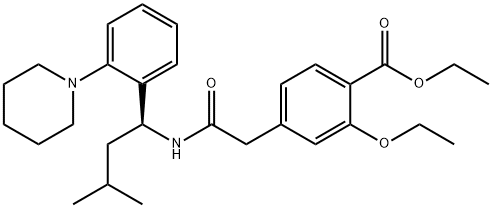
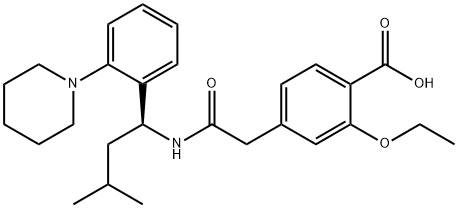
Repaglinide Preparation Products And Raw materials
| Supplier | Tel | Country | ProdList | Advantage | |
|---|---|---|---|---|---|
| Hefei TianRui Pharmaceutical Chemical Co., Ltd. | +86-0551-68665055 +86-+86-18616906106 | sales@trywchem.com | China | 129 | 58 |
| Henan Tengmao Chemical Technology Co. LTD | +8615238638457 | salesvip2@hntmhg.com | China | 415 | 58 |
| Henan Bao Enluo International TradeCo.,LTD | +86-17331933971 +86-17331933971 | deasea125996@gmail.com | China | 2503 | 58 |
| Henan Fengda Chemical Co., Ltd | +86-371-86557731 +86-13613820652 | info@fdachem.com | China | 7377 | 58 |
| Sigma Audley | +86-18336680971 +86-18126314766 | nova@sh-teruiop.com | China | 524 | 58 |
| Shaanxi TNJONE Pharmaceutical Co., Ltd | +86-13474506593 +86-13474506593 | sarah@tnjone.com | China | 794 | 58 |
| Beijing Cooperate Pharmaceutical Co.,Ltd | 010-60279497 | sales01@cooperate-pharm.com | CHINA | 1811 | 55 |
| Henan Tianfu Chemical Co.,Ltd. | +86-0371-55170693 +86-19937530512 | info@tianfuchem.com | China | 21695 | 55 |
| Shanghai Yingrui Biopharma Co., Ltd. | +86-21-33585366 - 03@ | sales03@shyrchem.com | CHINA | 738 | 60 |
| Anqing Chico Pharmaceutical Co., Ltd. | 15380796838 | chloewu@chicopharm.cn | CHINA | 341 | 58 |
View Lastest Price from Repaglinide manufacturers
| Image | Update time | Product | Price | Min. Order | Purity | Supply Ability | Manufacturer | |
|---|---|---|---|---|---|---|---|---|
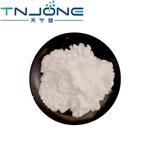 |
2024-04-13 | Repaglinide
135062-02-1
|
US $0.00 / kg | 1kg | 99% | 10000kg | Shaanxi TNJONE Pharmaceutical Co., Ltd | |
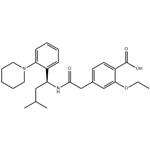 |
2024-03-29 | Repaglinide
135062-02-1
|
US $8.00-1.00 / KG | 1KG | 99% | g-kg-tons, free sample is available | Henan Fengda Chemical Co., Ltd | |
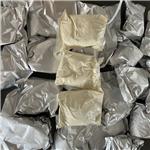 |
2024-03-15 | Repaglinide
135062-02-1
|
US $35.00-25.00 / kg | 1kg | 99.8% | 200tons/year | Sigma Audley |
-

- Repaglinide
135062-02-1
- US $0.00 / kg
- 99%
- Shaanxi TNJONE Pharmaceutical Co., Ltd
-

- Repaglinide
135062-02-1
- US $8.00-1.00 / KG
- 99%
- Henan Fengda Chemical Co., Ltd
-

- Repaglinide
135062-02-1
- US $35.00-25.00 / kg
- 99.8%
- Sigma Audley





